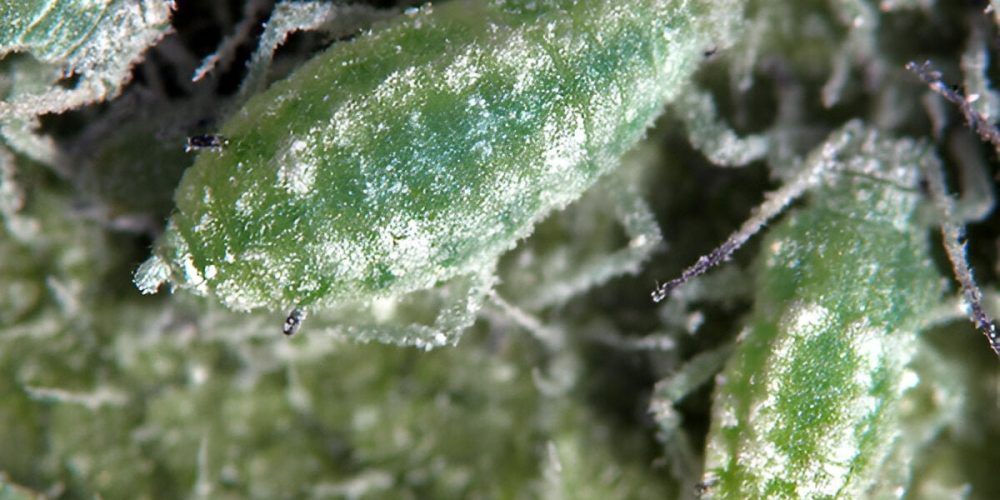Table of contents of the article
TogglePeach mealybug is a pest that affects peach trees, causing deformities on leaves and flowers. This article from the “WORLD OF PLANTS” website provides an explanation of the symptoms of infection and effective control methods.
Symptoms of mealybug
- Scientific name : Hyalopterus pruni Geiffr
- the family : homoptera
- Covering the leaves with a white powdery fluff.
- Honeydew covers the plant's leaves and small branches.
- Twisting and wrinkling of leaves.
- Terminal paper falling.
- The infection stunts the plant's growth and reduces its overall production.
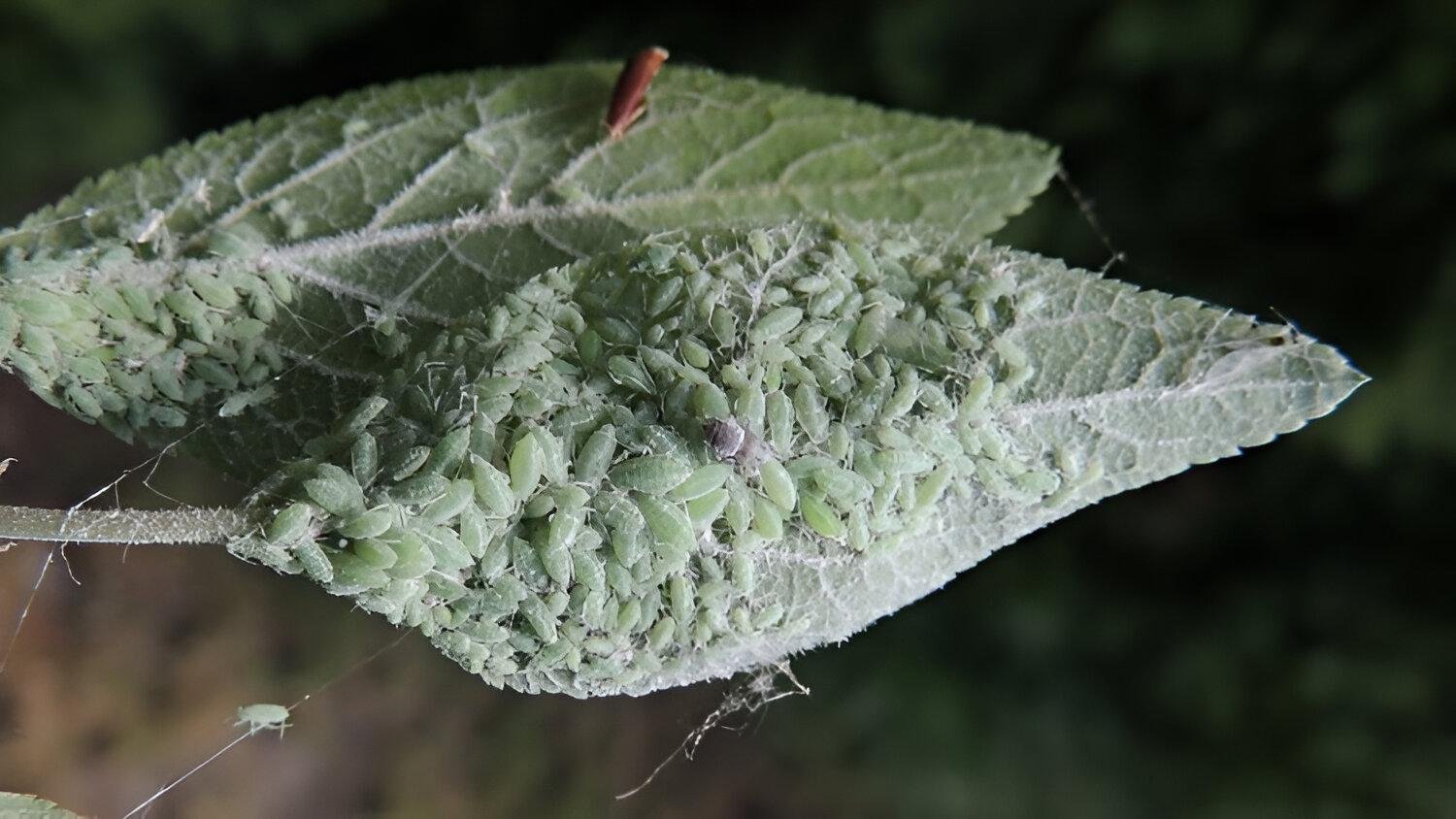
Description of mealy peaches
A small to medium-sized insect with a rectangular shape. Its color is usually pale green with smooth dark green spots, its chest is black, covered with wax, the tail is dark, the body length is 2.5-4.1 times the base, there are dark red forms in addition to green forms.
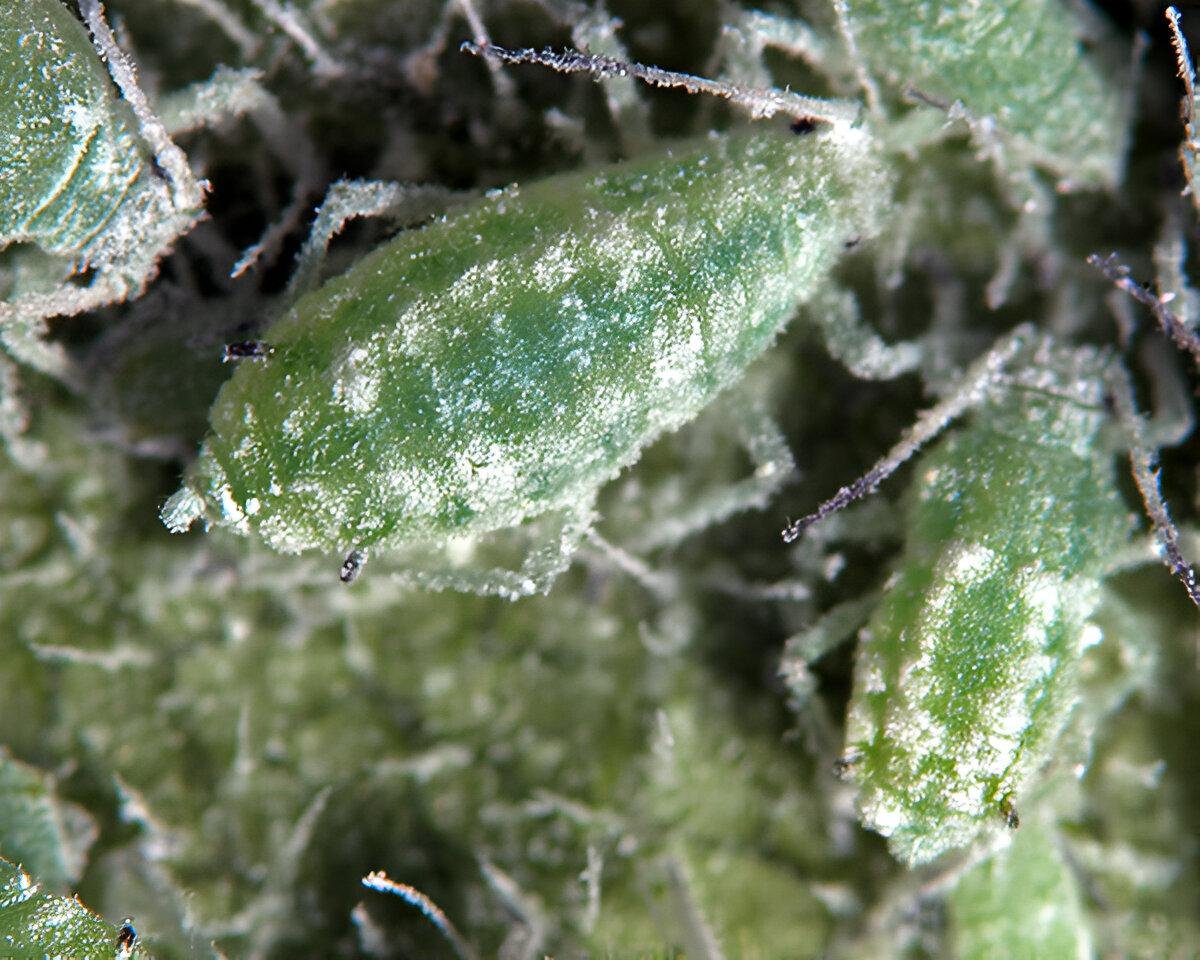
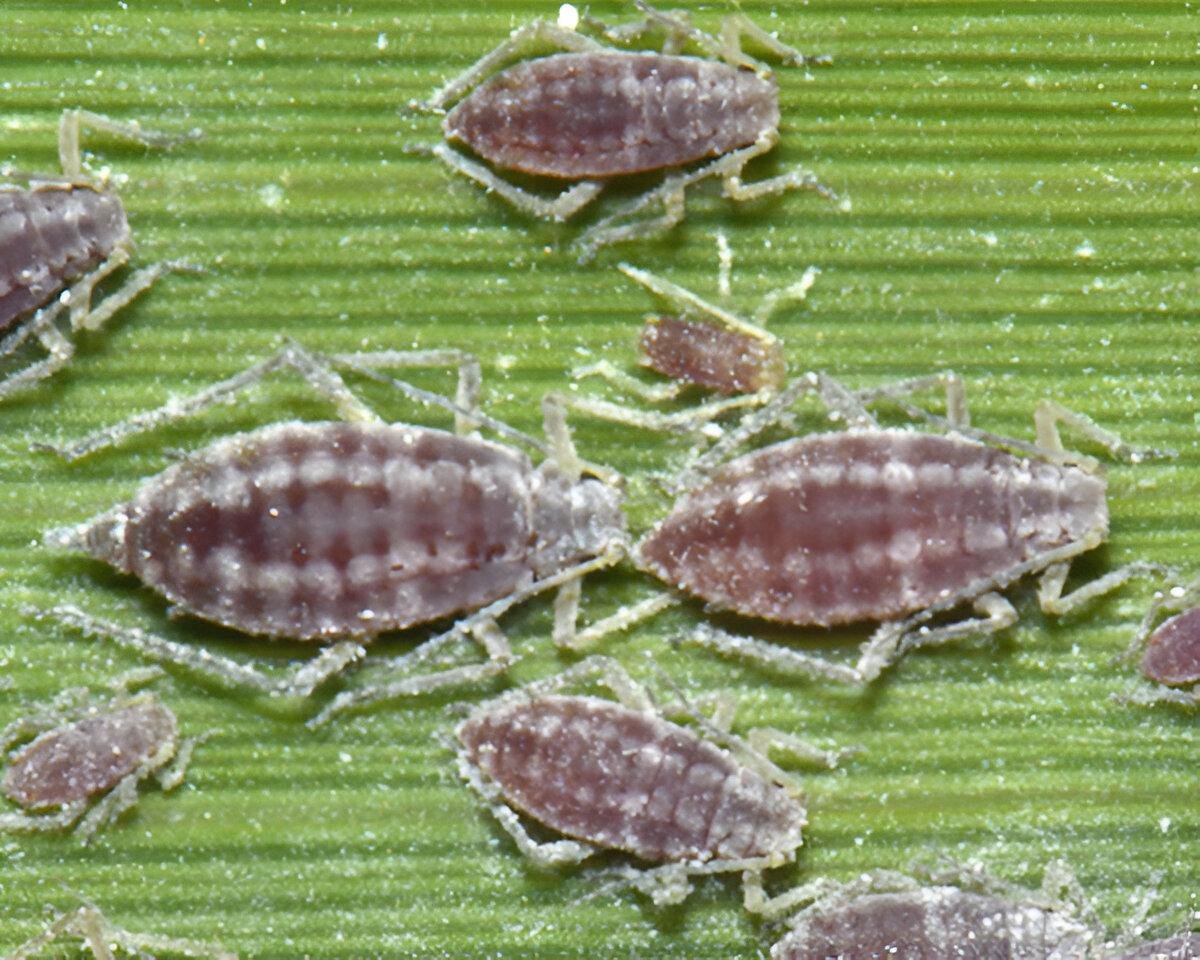
Causes of mealybug
- The presence of suitable environmental conditions for the insect, especially low humidity and high temperatures.
- Weeds infested field
- Failure to sterilize farms.
- Frequent use of chemicals
Suitable conditions for the propagation of mealy peaches
- Hyperthermia ( Greatest relative survival of nymphs at 26°C, Mean daily fecundity lowest at 14°C and highest at 22°C), Longevity of adults with higher temperature.
Development cycle of mealy peaches
- The fertilized winter egg that resides in the crevices and bark of trees hatches in early spring into small nymphs to produce wingless females that reproduce asexually for several generations and are permanently found on the lower surface of leaves, secreting honeydew.
- Winged females appear in late spring and mid-June to migrate to their summer hosts (reeds).
- These insects reproduce for several generations on the summer host until the fall, when the winged individuals appear again and return to their host. We notice males and females, mating and the laying of winter eggs occur.
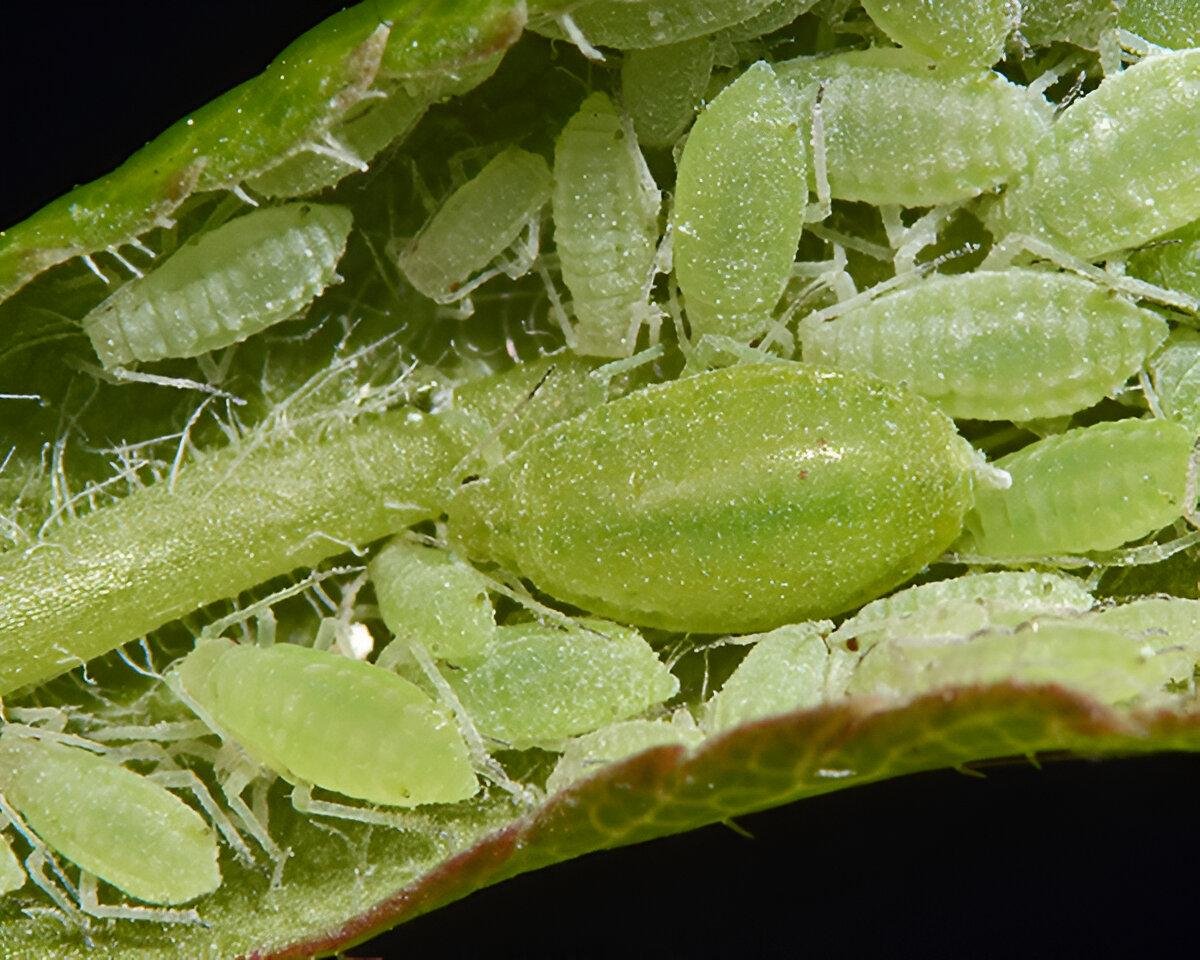
Propagation losses of mealy peaches
- Insects that feed on plant sap can cause significant crop losses, ranging from 70% to 80%, due to stunted growth, deformation, wilting, and other adverse effects on plants.
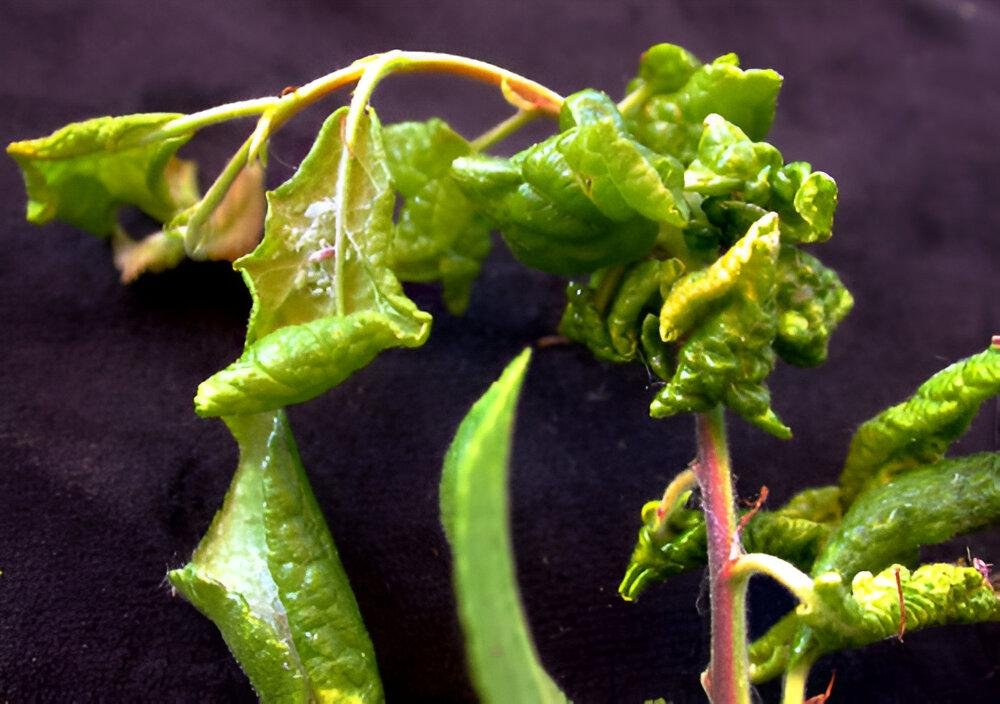
Control strategy for mealybug
1. Preventive measures to prevent the occurrence of peach mealybug
- Accurate identification of insects is crucial for early detection of their damage in the initial stages
- Taking care of the orchard in general, including regular irrigation and removing weeds
- Prune excess and intertwined branches, as they are often susceptible to infection.
- Balanced fertilization.
2. Chemical and organic control recommendations for peach mealy aphid
- Organic control
- With the arrival of autumn, the root zone is covered with ash and poured well with boiling water. The dissolved ash, which is absorbed into the root, this method repel aphids.
- Exochomus nigromaculatus as a biological control agent at 30 degrees.
- In addition, the boiling water poured kills insect larvae deposited under the bark at the bottom of the plant.
- Plant spices around infected trees. Aphids do not tolerate the smell of herbs
- Chemical control:
- Use modern systemic pesticides specialized for aphids in the spring and immediately after the eggs hatch, such as carbamate, terazol, and strobilin pesticides.
In conclusion, we would like to note that we, at the world of plants website, offer you all the necessary services in the world of plants, we provide all farmers and those interested in plants with three main services::-
- Artificial intelligence consulting service to help you identify diseases that affect plants and how to deal with them.
- Blog about plants, plant diseases and care of various crops ... You are currently browsing one of her articles right now.
- An application that provides agricultural consultations to clients, as well as a service for imaging diseases and knowing their treatment for free – Click to download the Android version from Google Play Store، Click to download the IOS version from the Apple App Store.
References
- Atlıhan, R., & Özgökçe, M. S. (2002). Development, fecundity and prey consumption of Exochomus nigromaculatus feeding on Hyalopterus pruni. Phytoparasitica, 30, 443-450
- Tayat, Esra; ÖZDER, Nihal. Research on the morphological and molecular diagnosis of Hyalopterus pruni (Geoffroy). Tekirdağ Ziraat Fakültesi Dergisi, 2023, 20.3: 723-730.
- LATHAM, Daniel R.; MILLS, Nicholas J. Effects of temperature on the life history parameters and population growth rates of Hyalopterus pruni (Hemiptera: Aphididae). Journal of economic entomology, 2011, 104.6: 1864-1869.
- Blackman & Eastop list 22 species of aphid as feeding on apricot (Prunus armeniaca) worldwide, and provide formal identification keys (Show World list). Of those aphid species, Baker (2015) lists 14 as occurring in Britain (Show British list).
- Development, fecundity and prey consumption ofExochomus nigromaculatus feeding onHyalopterus pruni – springer nature
- Research on the morphological and molecular diagnosis of Hyalopterus pruni (Geoffroy) – dergipark
- Effects of Temperature on the Life History Parameters and Population Growth Rates of Hyalopterus pruni (Hemiptera: Aphididae) – Oxford University Press
- Hyalopterus pruni Mealy Plum Aphid, Reed aphid – influentialpoints




